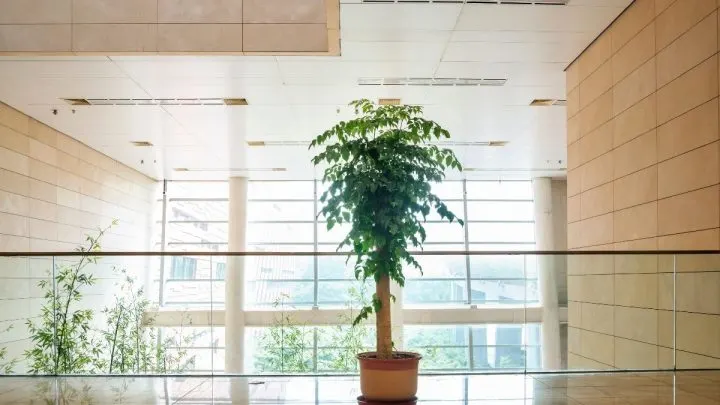Sometimes, all we need in our apartment is a plant or a tree that we don’t have to worry about much. Indoor trees low light are the magic of indoor beauty.
Sometimes it’s easiest to buy a plant for which we don’t have to constantly ask, how much light does it need? How much water does she need? Do I have to fertilize it again this month and so on?
Precisely for this reason, today we have prepared for you 9 plants that tolerate a little light. Below, read more about 9 indoor trees in low light.
If you are one of those people who doesn’t have much time to think about plants lately, but you like to have them in your apartment, keep reading.
Get the coffee ready and we can get started.
Most Popular Low Light Indoor Trees
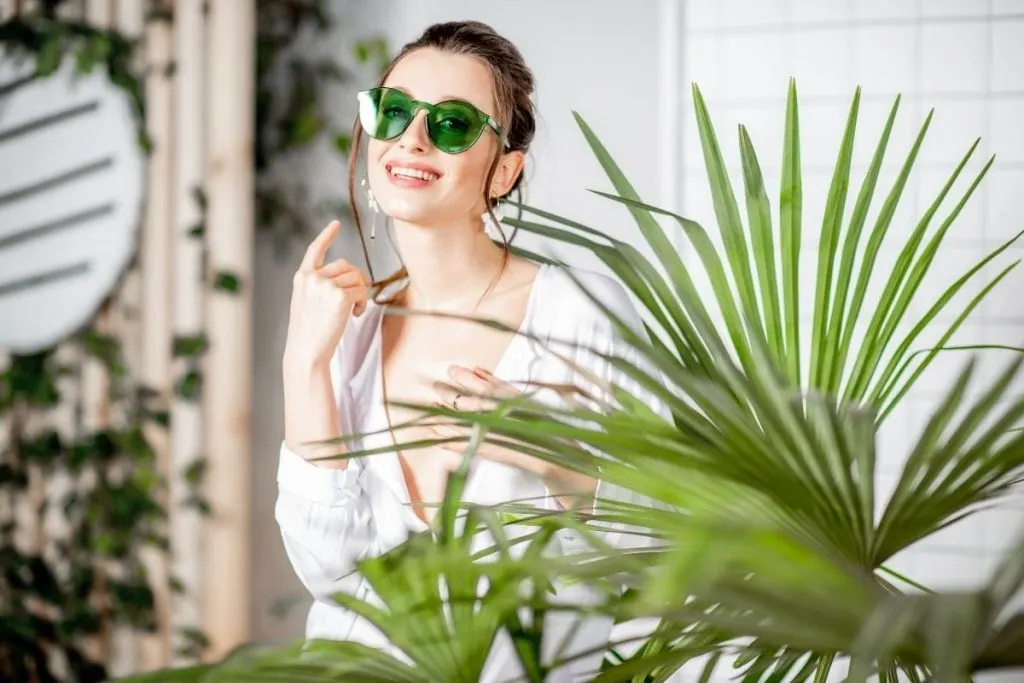
There is no king or queen between these trees/plants. No matter which one of these 9 trees you choose for your home, they will all make great decor plants for your home and will be okay with bright indirect light in your home.
Without further tho: we present you with 9 indoor trees low light.
1. All About Rubber Plant
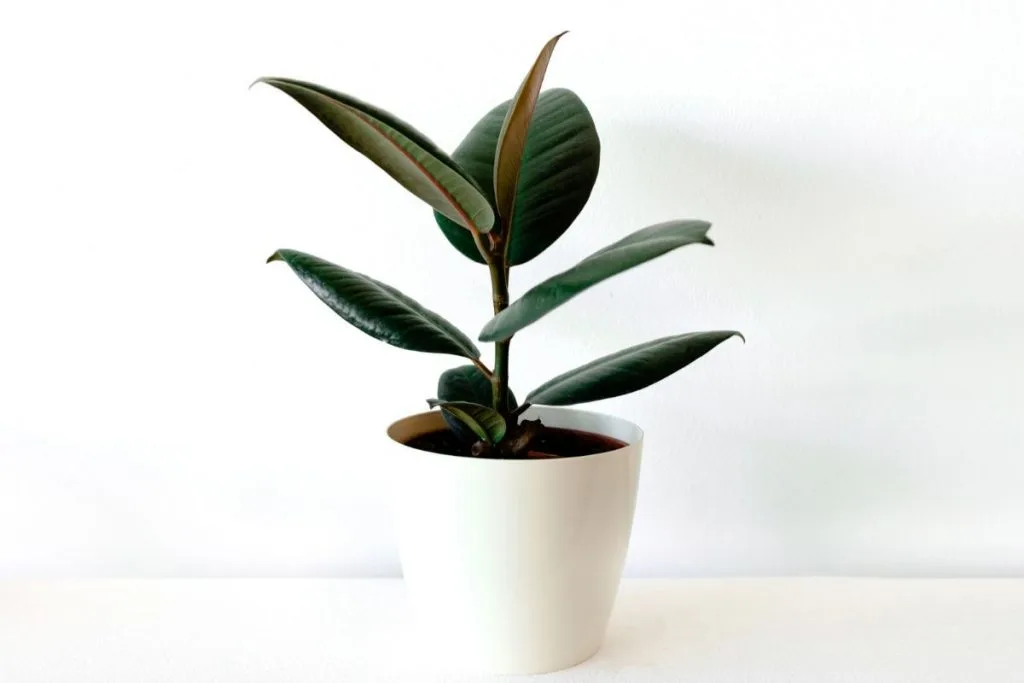
Easy to maintain, with proper care (Ficus Elastica, one of the ficus plant types) it will adorn your home and your life for many years. Below, find everything you need to know about Ficus Gummijevac and how to care for it properly.
LIGHT CONDITIONS
In terms of lighting, Ficus Elastica can handle a wide range of lighting. From strong indirect lighting to medium-low lighting. But what’s the trick?
While Ficus will survive in a medium-light environment, it will then produce a new leaf perhaps once a year.
WATERING SCHEDULE
Proper watering, as with other indoor plants, plays a key role. If you overdo it with water the ficus will rot, on the other hand, if you water it too rarely, the leaves may start to fall over time. That’s why it’s essential to find a balance when watering that won’t harm our Ficus.
SOIL NEEDS
The choice of soil for rubber plants is important: opt for a rich, well-drained, and soft substrate. You can mix universal soil with a few pieces of bark and sand.
FERTILIZER
My rule for fertilizing houseplants is very simple so that you don’t get “confused” in the multitude of species I have and keep track of which ones I fertilized when. And I see that my plants like that rule, so I stick to it.
PROPAGATION
It is propagated by pollination at the beginning of summer, which also rejuvenates the plant. It can be propagated in late spring or early summer by taking cuttings 5-8 inches long.
The lower leaves are removed and planted in the ground, preferably in a mixture of peat and sand.
2. Learn About Norfolk Island Pine Indoor Tree
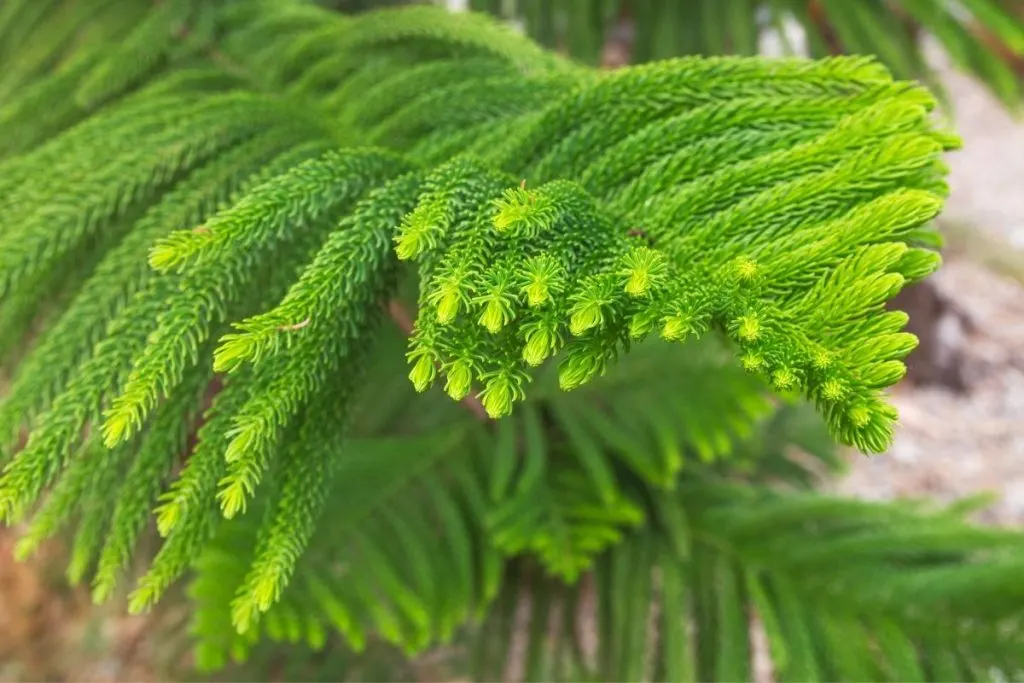
Growing Norfolk Island pine as a houseplant begins with understanding some important things about Norfolk Island pine.
Although it has the same name, it looks like a pine, but it is not a real pine and it is not as rigid as an ordinary pine.
LIGHT CONDITIONS
Another part of caring for pine plants in Norfolk Island is making sure the plants get enough light. Norfolk pine prefers direct, bright light for several hours, such as light in a south-facing window, but also tolerates very indirect light, strong light.
WATERING SCHEDULE
Water your pine trees on Norfolk Island when the tops of the soil are dry to the touch. Norfolk pines can be fertilized with a balanced, water-soluble fertilizer in spring and summer, but should not be fertilized in the fall or winter.
SOIL NEEDS
Norfolk island pine grows in a variety of habitats and adapts well to any type of soil. It tolerates limestone, silicates, and dolomites, and grows on sandy and dry soils.
It is not demanding on the acidity of the soil, and rich and moderately moist sedges are optimal for cultivation.
FERTILIZER
Norfolk pines can be fertilized with a balanced, water-soluble fertilizer in spring and summer, but should not be fertilized in the fall or winter.
PROPAGATION
Propagation by cuttings is a more risky method of propagation, especially if the tree from which the cuttings are taken is older. It is more difficult to achieve results by planting directly in the ground, so vaccination proved to be the best way.
3. Indoor Trees Low Light – Umbrella Tree And Its Magic
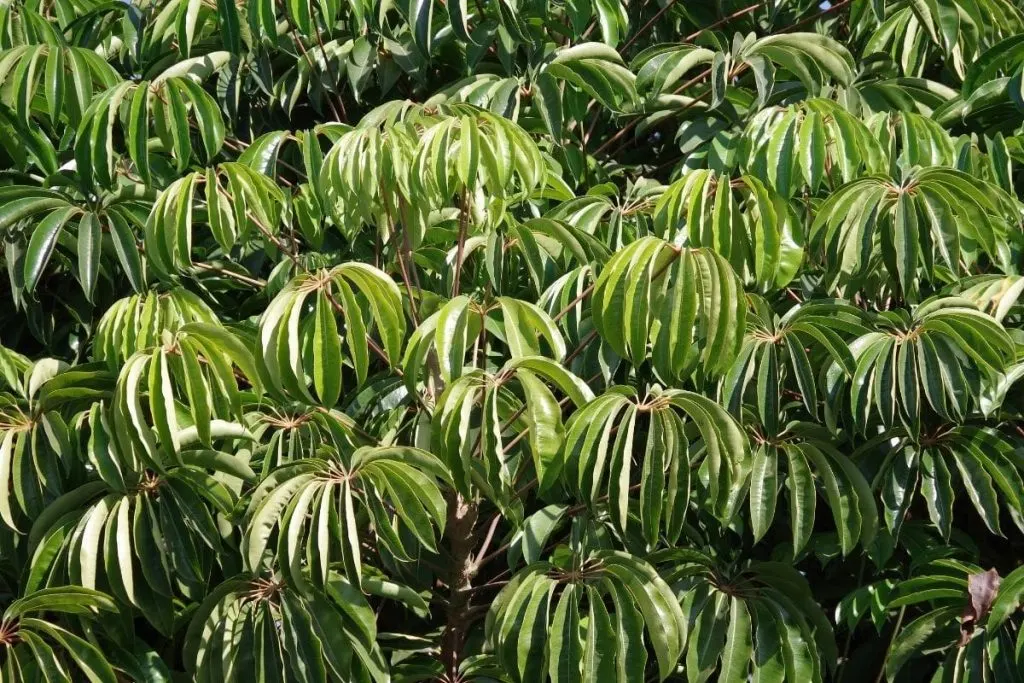
The Sheffler house plant is very popular and exists in several forms. The most famous are the “umbrella tree” and the dwarf umbrella tree. One of the reasons why this plant is so popular is that the care for it is minimal, but still, this does not mean that it does not need care
LIGHT CONDITIONS
Schefflera is a plant that needs moderate sunlight, which means that indirect sun is the best option. What people usually complain about when growing Schefflera is that it sometimes seems to relax and hang.
This problem occurs because the plant does not get enough light. The umbrella tree should be grown in a room with enough light and the plant will grow nicely.
WATERING SCHEDULE
When watering the umbrella tree, wait for the soil in the pot to dry, then soak it with water. It often happens that people flood the Sheffler, which causes it to fail over time.
Yellow leaves falling off the plant is a sign that you are watering it too much.
SOIL NEEDS
Without much ado, this plant likes an ordinary potting mix for house plants.
FERTILIZER
You don’t have to fertilize the umbrella tree, but if you want, you can give it a diluted fertilizer once a year.
PROPAGATION
As is the case with many other shrubby plants, Schefflera pelts will produce a perfect clone, without the risk of mutation, which is possible when planting seeds.
Propagate Schefflera by cuttings and you will have a real collection of healthy plants, which will grow into beautiful indoor plants in a month or two.
4. How To Take Care Of Grown Indoors Dragon Tree
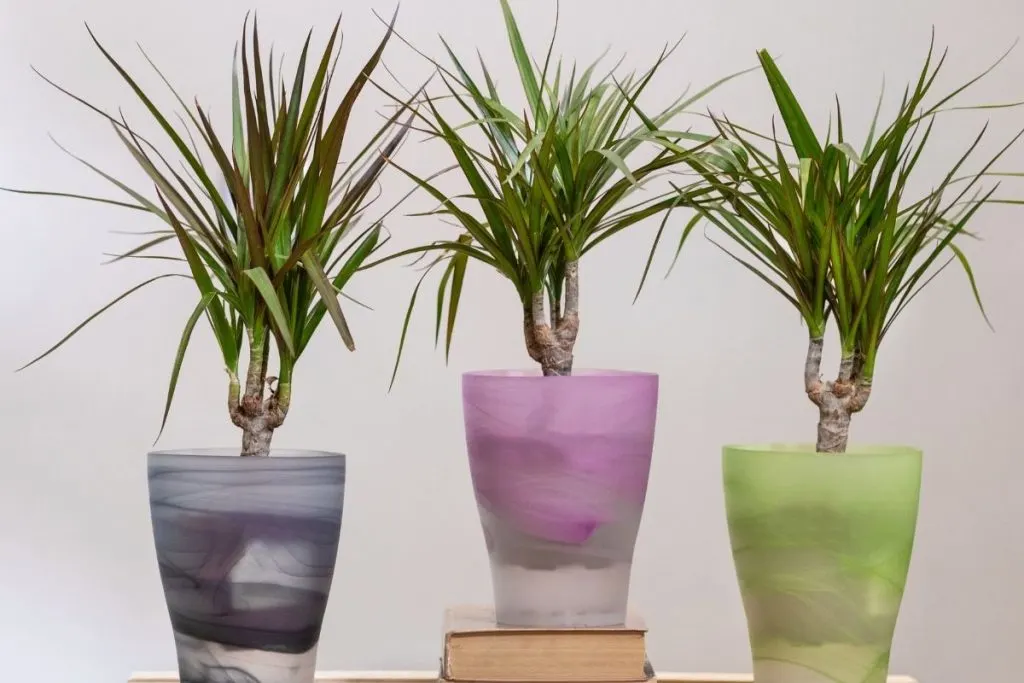
The dragon tree (Dracaena marginata) is an evergreen indoor plant known for its beautiful appearance and thin striped leaves that erupt from its strong stems.
One of the easiest to maintain plants and an excellent indoor air purifier, Dragon Tree requires very little maintenance, bringing beauty and elegance to any space.
LIGHT CONDITIONS
Dragons prefer strong indirect lighting but can adapt to medium to low light levels. Avoid direct sunlight, as too much sunlight, can burn the leaves. This tree tolerates low light and indirect or filtered light. They thrive in low light.
WATERING SCHEDULE
Allow the dragon tree to dry between waterings. When the soil is dry, water well, usually once a week. Avoid excessive watering and remember that your irrigation schedule may be less frequent during the winter months.
SOIL NEEDS
I don’t think universal compost is suitable for houseplants. It is hard, retains moisture, and takes time to dry. The best option would be peat moss.
FERTILIZER
The best option for this indoor plant is liquid fertilizer.
PROPAGATION
Follow these instructions to propagate the Dragon Tree.
- Select the branches or stems to propagate.
- Using scissors or sharp, clean scissors, cut the dragon’s branch at a 45-degree angle.
- Add water – find a clear glass and fill it with water.
- Make sure that the stems are submerged in water and that there are no leaves in the water.
- Put him in a bright room and wait! – Avoid direct sunlight.
- You may need to change the water every few days to keep it clean. It usually takes a few days for the roots to grow.
5. Lady Palm Tolerate Brighter Light
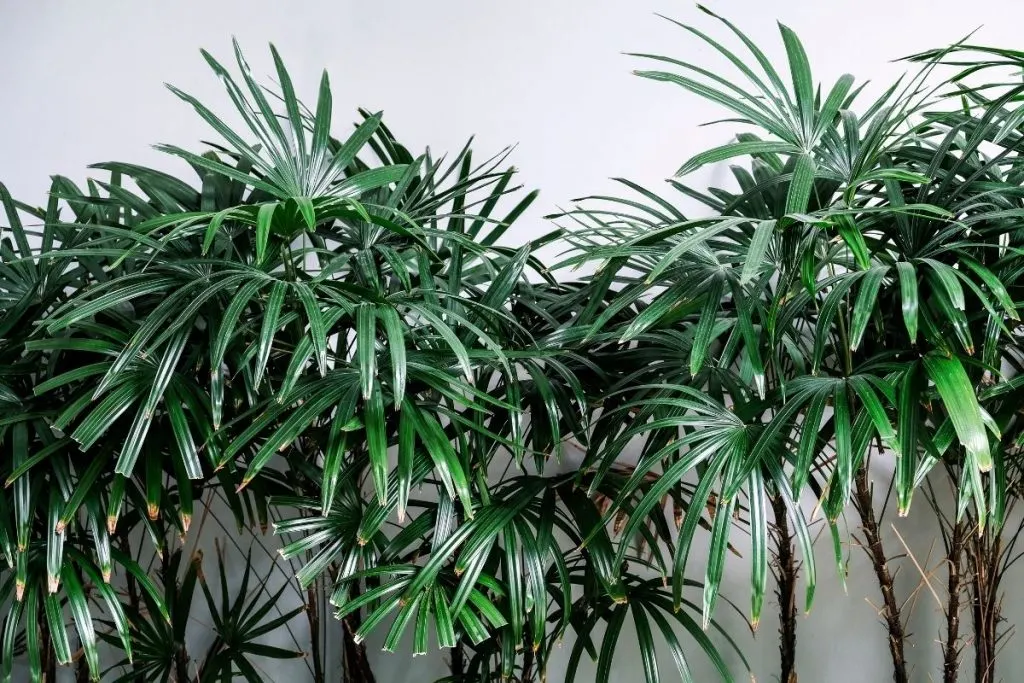
The palm (Rhapis excelsa) is a small species of palm that grows in dense groups of thin, green, vertical stems. The stems have glossy pinnate green leaves, each with 5-8 narrow lanceolate nodes. This palm tree is very tolerant to low light conditions, which makes it a popular indoor plant.
LIGHT CONDITIONS
Direct sunlight or not suitable for such palm trees. The unfiltered sun can burn the leaves. When grown outdoors, ladies’ palms love stained light and can tolerate slightly shaded areas.
The palms inside should be placed next to a window that receives bright indirect light. What can you use the most for these plants is filtered or indirect light? This works for almost all palm tree species.
WATERING SCHEDULE
Lady palms require moderate watering and are somewhat drought tolerant once established. Water when the top of the soil is dry in spring and summer when the palm trees are most active.
In autumn and winter, reduce the water until the first two centimeters of soil are dry to the touch.
SOIL NEEDS
Well-drained clay soil is best for palm trees. When growing in containers, pot mixes made especially for palm trees work best. African purple potting soil is also suitable.
FERTILIZER
Ladies palm trees need fertilization only during the growing season. From April to September, feed your palms with liquid fertilizer for houseplants diluted in 1/2 concentration each month.
PROPAGATION
These plants are propagated the same way as the dragon tree.
6. Fiddle Leaf Fig Likes Bright Light
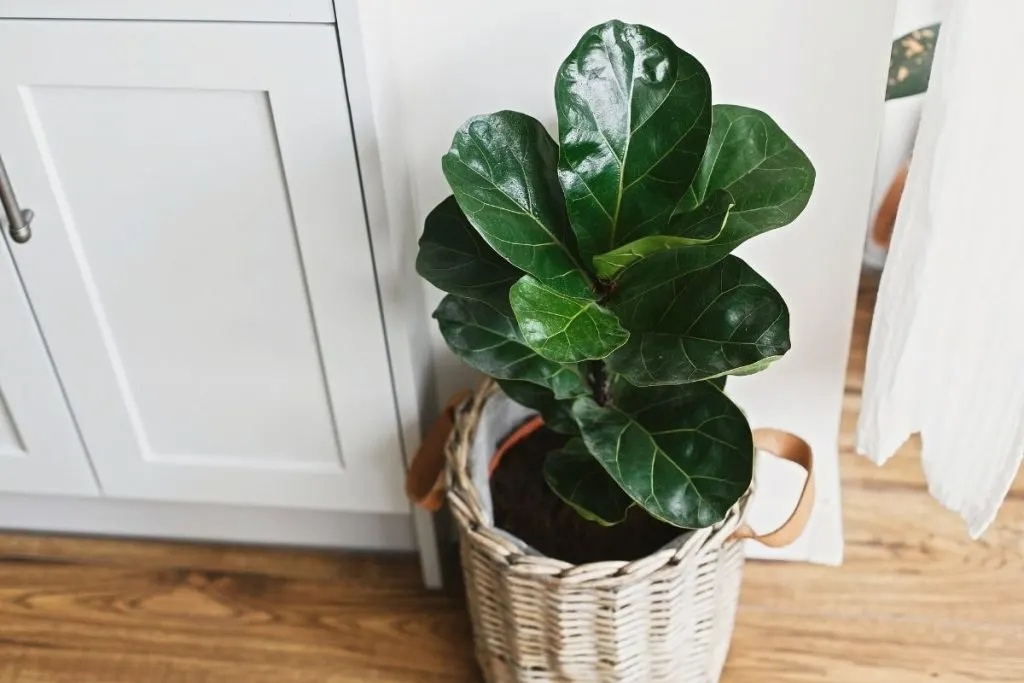
The violin-leaf fig as some call it (Ficus lyrata) is a popular indoor tree with very large leaves and deep, glossy violin-shaped roots that grow upright on thin stems.
LIGHT CONDITIONS
Fiddleleaf figs need bright, filtered light to grow and look their best. Direct sunlight can burn the leaves, especially when exposed to the scorching sun. And plants stored in very low light do not grow quickly.
WATERING SCHEDULE
Violin figs prefer moderate soil moisture. If the plant does not receive enough water, the leaves will wither and lose their bright green color. And too much water can cause plants to fall off their leaves, rot their roots, and eventually die.
SOIL NEEDS
A mixture of high-quality pots for houseplants should be suitable for fig leaves. Make sure the soil is well-drained.
FERTILIZER
Fertilize with nitrogen plant foods throughout the growing season, according to the instructions on the label. There are fertilizers specially designed for fig leaves.
PROPAGATION
Fiddle Leaf Fig is easy to propagate from stem cuttings, but very difficult to grow from seed. Cutting does not mean failure.
- Using sharp scissors, cut a multi-leafed stem about 12 to 18 inches long. Cut all the leaves except the leaves.
- Place the cut vase in a pot or vase with clean water at room temperature and place it in a bright but warm place with indirect light.
- Only change the water if it looks cloudy.
But what if it is drooping or has other issues? The answer to the question fiddle leaf fig leaves drooping? And much more can you find on our site.
7. Corn Plant Prefers Very Low Light
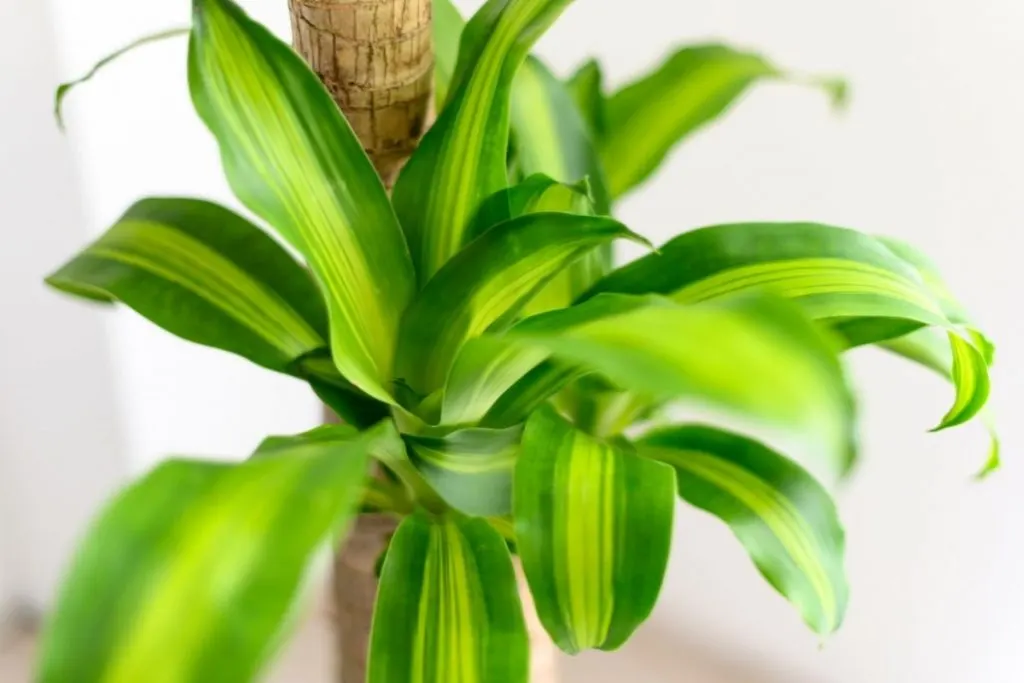
The corn plant (Dracaena fragrans) is an evergreen tropical African plant that has been popular as a houseplant in Europe since the mid-1800s and in the United States since the early 1900s.
LIGHT CONDITIONS
The ideal indoor location for this plant is next to a window where sunlight is filtered. Too little light will cause the leaves to lose their color and slow down plant growth.
Under the influence of direct sunlight, the leaves of the plants may burn or dry out. Outdoors, the plant grows well in the shade.
WATERING SCHEDULE
Keep the soil evenly moist, but not moist during the growing season (spring to autumn). Reduce watering in late fall and winter.
However, do not allow the soil to dry completely. Soil that is too wet or too dry can cause health problems.
SOIL NEEDS
A mixture of free clay pots is the best option for growing corn plants. Make sure the soil is well-drained, as the roots do not grow well in stagnant water.
FERTILIZER
Corn plants prefer rich organic soils. During the growing season, apply a balanced liquid fertilizer every two months and feed little or no winter.
PROPAGATION
A good time to multiply this plant is when it starts to grow in your room. You can make another plant by cutting off the top of the original parent plant.
8. Neanthe Bella Palm Likes Low Light Indoors
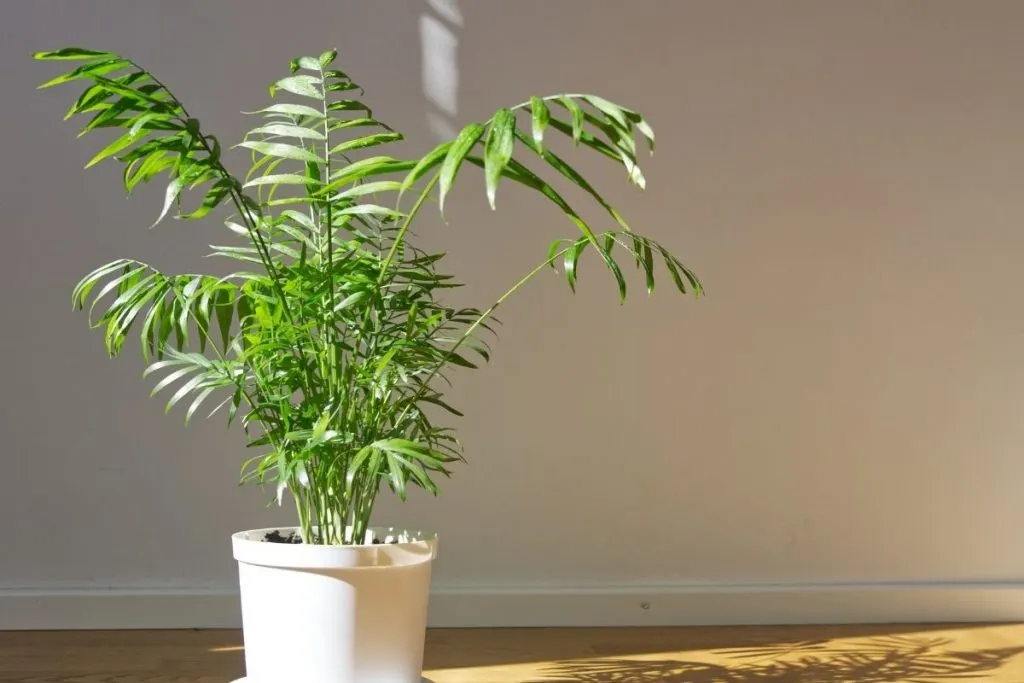
Bella Palm (Chamaedorea Elegans) has been used as a houseplant since ancient times. This beautiful plant with green leaves was first discovered in Central America and brought to the United States, where it immediately became a popular indoor palm.
LIGHT CONDITIONS
Although they are considered low-light plants, this does not mean “without light”. The palms of the room receive bright, filtered sunlight. It often handles Nordic exposures best.
WATERING SCHEDULE
Salmon palms, like most palm trees, are sensitive to excessive watering and do not tolerate diving or settling in saturated soil. Ideally, it will keep the humidity at a uniform level. There is an error on the slightly too dry side instead of too much water.
SOIL NEEDS
Inside, high-quality peat-based potting soil is all you need. Make sure that the mixture does not crumble and does not become sponges. In open ground, this palm grows well on almost any soil, such as sand, clay, or loam. However, it does not tolerate saline soils.
FERTILIZER
Apply liquid fertilizer once or twice during the growing season and not at all in winter. This plant is an easy nutrient.
PROPAGATION
Bella palm plants are almost always propagated from seed by professional growers. You can successfully divide the root mass into two smaller pieces, but this is not recommended because it puts too much stress on the plant and roots.
9. No Direct Sunlight For Areca Palm As Well
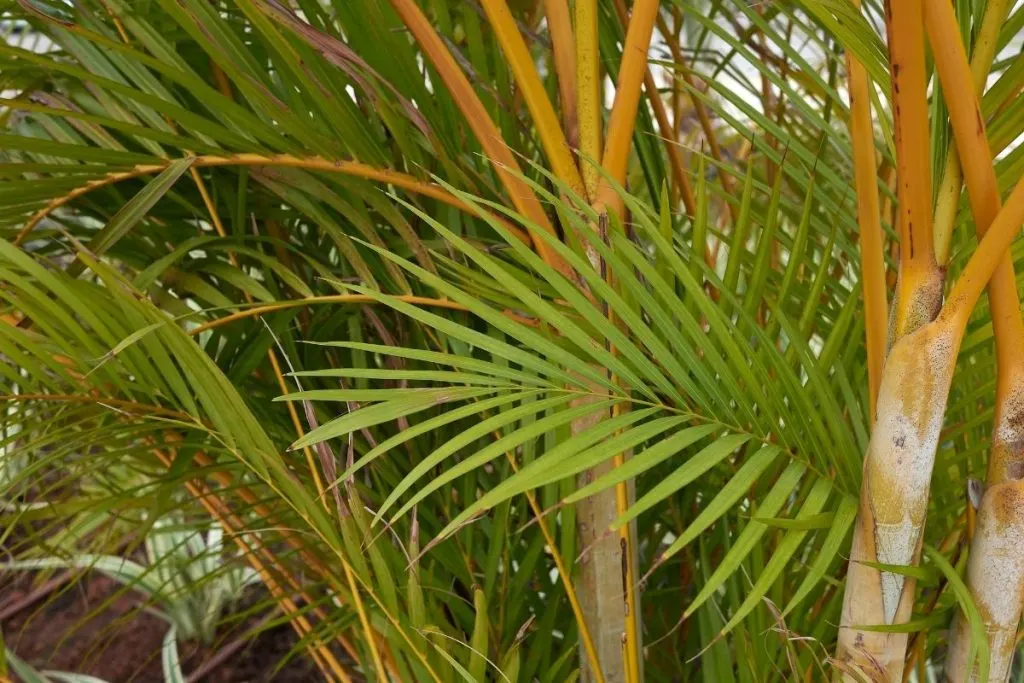
It is hard to believe that the areca palm (Dypsis lutescens) is considered an endangered species in native Madagascar. In the warmer climates of America, walking on almost any street, you will see dozens of large, enchanted, and twisted palms. It looks like bamboo.
LIGHT CONDITIONS
Outdoors, these cat palms like bright, filtered light, but can tolerate full sun. Inside, areca palm trees work best with strong light coming in from windows facing south or west.
WATERING SCHEDULE
Like most palm trees, the areca palm prefers moist soil, but is sensitive to excessive watering and does not tolerate submerged or submerged soils. Allow the soil or potting soil to dry slightly between waterings.
SOIL NEEDS
Well-drained, peat-based soil is ideal for potted houseplants. Open specimens work best in rich, slightly acid soils that drain well. Sand and peat amendments may be needed to improve porosity and lower soil pH.
FERTILIZER
Areca palm trees are fern and should be fertilized with a liquid fertilizer from spring to early autumn, according to the instructions on the label. Do not give late autumn and winter when the plants are dormant.
PROPAGATION
Areca palms can reproduce by dividing the roots, so lush plants grow faster than seeds, but the cuttings do not. Rooting can be done at any time of the year, but the plants are the strongest in the spring.
What Indoor Plant / Tree Needs The Least Light To Survive?
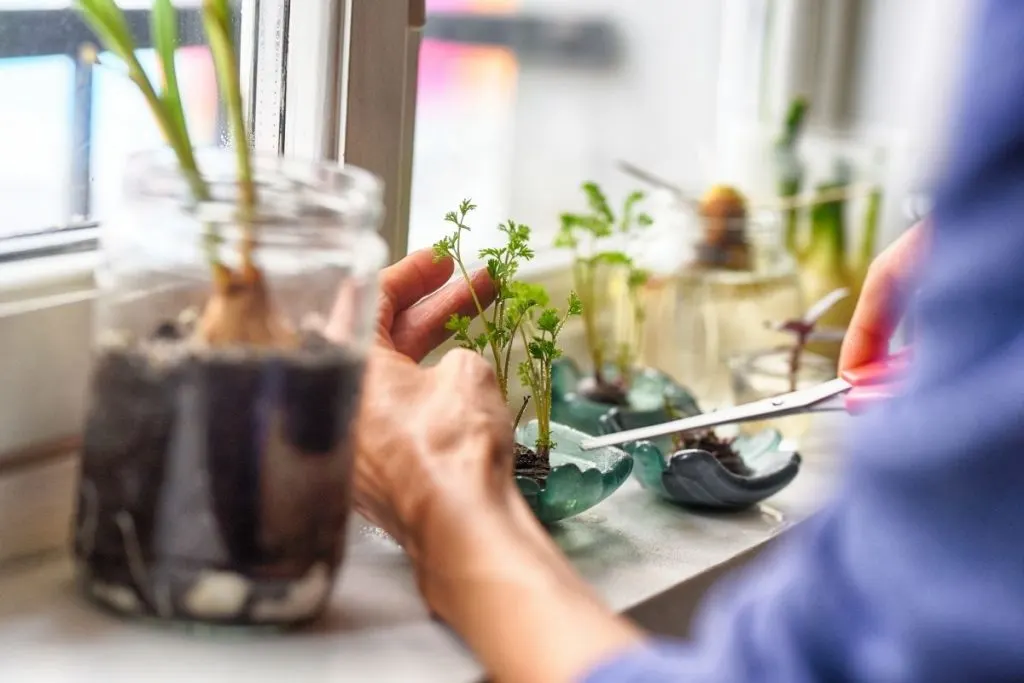
There is no perfect answer to this question. All of the mentioned trees/pants above can tolerate brighter light. The best low-light indoor option doesn’t have its perfect “plant customer.”
All of the mentioned nine plants will stand perfectly in low light conditions and they will still grow nicely and healthily. Opposite to the light needs of underwater flowers.
In Conclusion About Indoor Trees Low Light
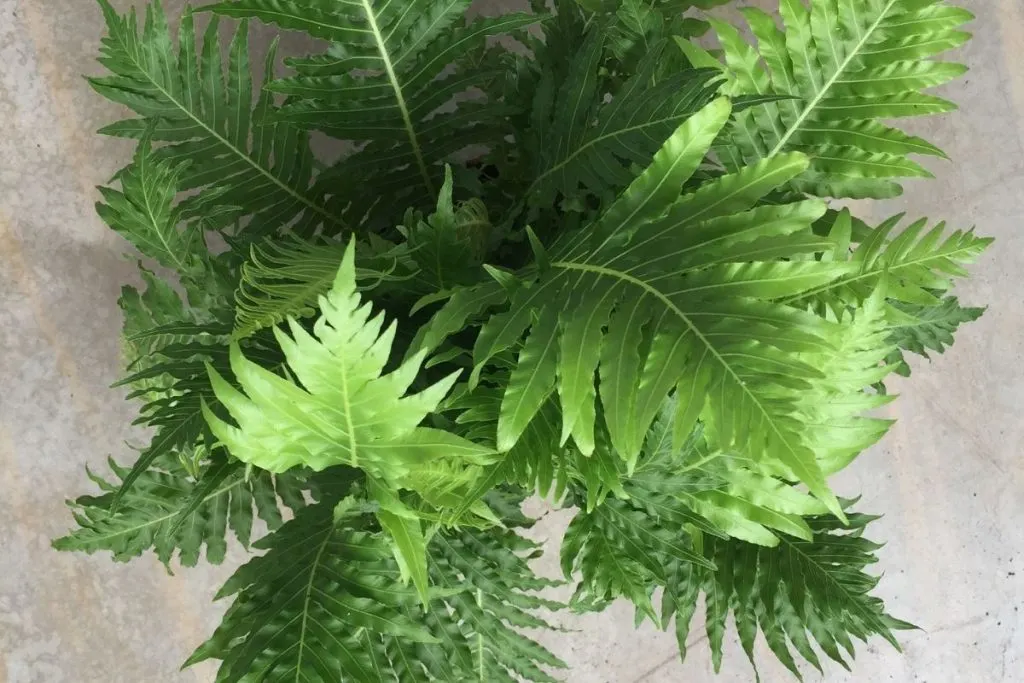
These trees aren’t the only types of trees that can handle low light. Indoor trees low light fans a money tree as well, orange trees, Madagascar dragon tree, other fruit trees too, parlor palm, and many others. All of these plants like indirect sunlight.
It doesn’t matter how many feet tall are they, they will make the best indoor trees due to their light tolerance.
They will still be producing narrow green leaves even with a bit of morning sunlight. A low-light tree mostly tolerates low humidity as well. Avoid exposing them to direct sunlight of course.
Even with low light, some of these are not slow-growing plants. They can grow fast and get up from one foot to up to six feet. Soil moisture is what these plants like the most.
Adequate light for these plants is just like light in their native tropical environment. An east-facing window should be a fine option for your small indoor tree.
That’s all for today ladies, until next time!

